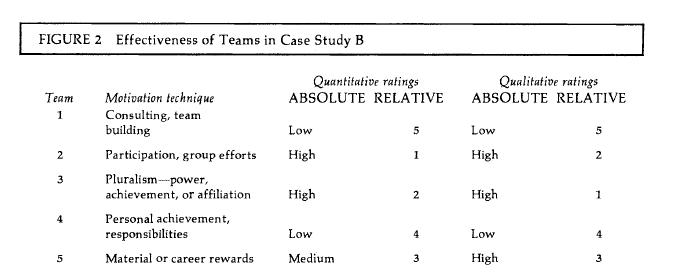Company B designs, manufactures, and markets computers, storage devices, and peripheral devices, such as card readers and
Question:
Company B designs, manufactures, and markets computers, storage devices, and peripheral devices, such as card readers and printers. The company's plant, which produced medium-to-high

volume products—approximately $ 5 0 0 million in annual sales—needed a n ew total factory control system. This was being developed by a central Information Systems group. The group had five teams, one each for bill of material (BOM) system, master scheduling, inventory, order planning and release, and financial interfaces.
Three to five individuals had been temporarily assigned from the appropriate functional departments to each of the five teams. The teams ranged in size f r om 2 0 to 3 0 individuals, including the user representatives and the Information Systems analysts and programmers.
For Case Study B, T e am 1 emphasized consulting together and t e am building; Team 2 followed an emphasis on involvement and interpersonal communication; Team 3 stressed recognition of power, achievement, and social needs;
Team 4 focused on personal achievement and responsibility; and Team 5 provided material rewards for success.
In terms of labels, T e am 1 used Argyris' t h e o ries, Team 2 Likert's S y s t em 4, T e am 3 McClelland's pluralism, Team 4 Herzberg's satisfiers, and Team 5 crude behaviorism.
As in the first case study, success was measured quantitatively and qualitatively. The primary quantitative measurement was performance against schedules. Quality reviews were built into the schedules, so schedule performance was an accurate measure of success. Team sizes were fixed and overtime was limited, so cost pressures were felt in schedule pressures. The qualitative measures were attitude, morale, and turnover (resignation from the company). Information Systems provides highpaying glamour jobs, and the people are particularly susceptible to outside offers. By subjectively excluding the turnover in which individuals received "offers they couldn't refuse," a qualitative ranking of the techniques was obtained.
TEAMS SHOW STRIKING DIFFERENCES Figure 2 illustrates the results. There was excellent rapport and high enthusiasm among Team 1 members. When the group s t a r t ed to miss schedules, it held meetings and agreed to commitments to make up lost time. Unfortunately, the camaraderie was never converted into success. The schedule performance went from bad to worse.
Eventually, a n ew team manager was brought in and new supervisors were appointed. The new individuals were more conscious of discipline and reduced the emphasis on t e am togetherness. The project got back on schedule.
Team 2 was managed in a manner very similar to T e am 1. Y e t the differences in results could hardly have been more striking. T e am 2 was consistently on schedule, with happy people. People on other teams requested transfers onto this team. Why such a difference? There was no pattern of differences in skills, experience, maturity, or any other factor that we could identify. The personalities on the team were very different, and with hindsight it was not difficult to explain the differences in results on the basis of differences in specific individuals. Generalizing from the experience, however, could not be justified.
Team 3 was also very successful. The team manager, a woman, was adept at meeting people's needs r a t h e r than forcing t h em to fit a style. As a "power" type herself, she understood those needs.
She also could give the achievers free rein to achieve and allow the "affiliators" to socialize while achieving. The result was a happy, successful group.
Team 4, like T e am 1, was disappointing in its results. However, the reasons were clearer. Unlike the achievement-motivated t e am in the aerospace company, the high achievers on this team were unable to c a r r y the others. The result was poor quantitative performance and frustration for all. Most of the good people resigned. After some shuffling of personnel between this group and others, schedule performance improved.
Despite the middle-of-the-road performance, Team 5 was in many ways the most puzzling. By a staffing quirk, the t e am was comprised mainly of company veterans with moderate motivation and competence. They just did their jobs day after day, apparently oblivious to any kind of shortt e rm motivation techniques—including the material rewards, towards which their basic attitude was cynicism. The net result was a moderately successful performance.
The number of people involved is t o o large t o describe all the interesting individual situations.
One individual stands out as an example of a square peg in a round hole. Vern M. was a supervisor on T e am 4 who had a good track record as a programmer and systems analyst. However, upon his promotion to supervisor, he became infatuated with company politics as the only way to get ahead. He became such a misfit—both on T e am 4 and in general—that he was demoted, whereupon he resigned. I suspect there are numerous people like him in the world, too many of whom are successful and all of whom are difficult to motivate with morally acceptable techniques.
Step by Step Answer:

Readings And Exercises In Organizational Behavior
ISBN: 9780120547524
1st Edition
Authors: Jane W. Gibson, Richard M. Hodgetts





